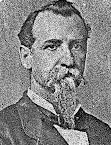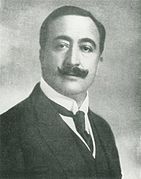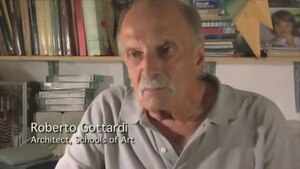Italian Cuban
 
|
|
| Total population | |
|---|---|
| (2340 in 2008, with nearly 20,000 descendants) | |
| Regions with significant populations | |
| La Habana · Mantua · Varadero | |
| Languages | |
| Spanish · Italian | |
| Religion | |
| Roman Catholicism | |
| Related ethnic groups | |
| Italian people |
Italian emigration into Cuba was minor in comparison with other waves of Italian emigration to the Americas, where a few thousand Italians moved to Cuba, compared to the millions that went to Argentina, Brazil and the United States.
After Cristoforo Colombo (Italian from Genoa), discovered Cuba in 1492, the first Italians arrived with the Spanish conquistadores. Some were sailors and soldiers of fortune but most were missionaries. In 1605 shipwrecked Italian sailors founded the city of Mantua, Cuba in the far west of the island. These sailors came from the Genoa and Venice areas.
The Royal Decree of Graces (Real Cédula de Gracias) which was originated August 10, 1815 by the Spanish Crown, was issued with the intention of attracting European settlers who were not of Spanish origin to populate what would the be two of remaining colonies of the Spanish Empire, Puerto Rico and Cuba.
Despite their small numbers, many Italian Cubans reached high positions in Cuban society. For example, (son of a lauded Italian family resident in Trinidad, Cuba) became a Cuban patriot and the president of the "Republic in Arms" in 1876. Italians fought and some of them died for Cuba in the first tentative for independence from Spain: in Las Tunas died in those years the Sicilian journalist Achille Aviles and later was killed the "garibaldino" Natalio Argenta.
Only in the mid-19th century did there develop a small Italian community in Cuba: they were mostly people of culture, architects, engineers, painters and artists and their families. They were called to Cuba to work in the development of the churches, monuments and government buildings in Havana. In 1884 these first Italian Cubans (who were nearly 3,000) founded the "Sociedad de Socorro Mutuo" (Society of Mutual Aid) and in 1891 the "Sociedad de Beneficiencia" to help the neediest among them. At the beginning of the 20th century socialist associations were formed but these were strongly opposed with the Catholic-aligned authorities.
Some Italian Cubans participated actively in the Cuban War of Independence, such as Oreste Ferrara editor of the national El Heraldo de Cuba newspaper. Indeed in April 1898, a group of 75 Italian volunteers sailed to Cuba with some money obtained from subscription in Italy: their leader was coronel Francesco Federico Falco, who fought bravely under general Antonio Maceo and was named "commander" of the Health Corp in the Liberation Army of Cuba. Falco later founded the magazine “La Cultura Latina” in la Habana, the first literary introduction of socialism in South America (it was widely popular in Venezuela and Argentina) and in Cuba. It was the first magazine that promoted in the Cuban society the philosophical ideals that were developed later in the Fidel Castro revolution.
...
Wikipedia

